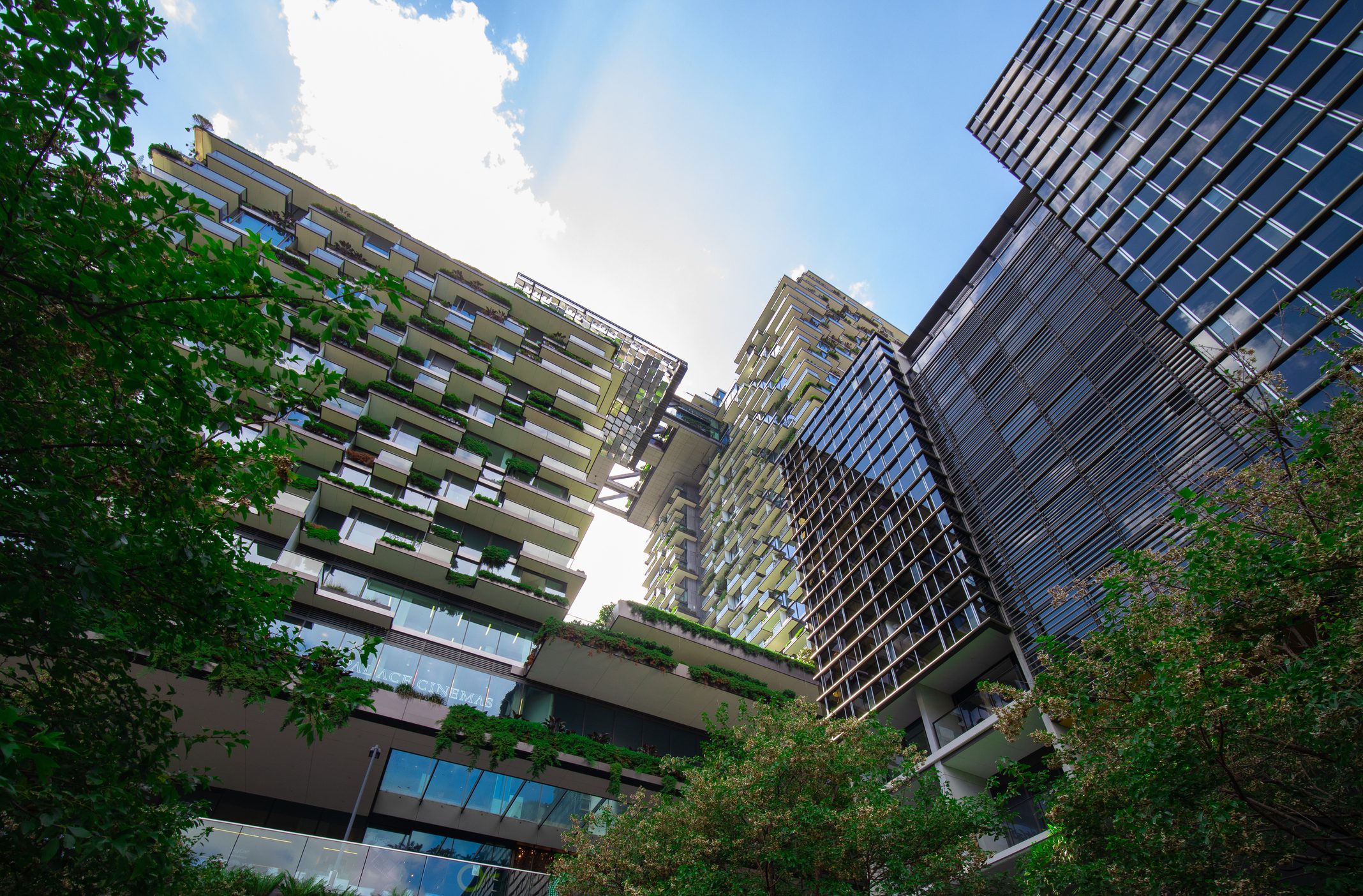By: Liv Ehlert, CAPM & Jessica Heine
As we become more aware of the environmental and social challenges facing our world, it’s critical that, as an engineering firm, we find innovative ways to contribute to reducing our carbon footprint and embracing sustainable practices. The increase in greenhouse gasses (GHG), caused by energy consumption and emissions, is one of the main factors contributing to climate change. By reducing our carbon footprint, such as designing energy-efficient buildings, using sustainable materials, and implementing design practices that focus on reducing our environmental impact, we can contribute to reducing emissions, which helps mitigate adverse effects on our planet. From a buildings design perspective, integrating a regenerative design approach is one way to impact the built environment and our communities positively.
Defining Regenerative Design
The regenerative design method follows a holistic methodology. It includes a system of strategies that strive to design buildings that reduce their impact on the environment and actively contribute to the positive current and future systems state, social impact and ecological balance. This design approach can involve a wide range of strategies, including using renewable energy sources and materials, considerations to ensure the well-being of the occupants and users are prioritized, and systems that do not contribute to future environmental damage but to a net positive outcome. In addition, regenerative design focuses on creating buildings and infrastructure that are in harmony with their surroundings, which includes the environment, place, and people.
Beyond Sustainability
In the built environment, sustainable design intends to reduce negative impacts throughout a building’s life cycle. Specifically, sustainable design strategies highlight efficiency, energy, and waste reduction. As described, the regenerative design approach goes beyond general sustainability design practices and intent, seeking to create buildings and structures that actively contribute to the restoration and enhancement of the communities they are a part of. Regenerative design represents a holistic and innovative approach that integrates all systems, including natural, renewable resources and technologies, to create buildings that are not just environmentally friendly but also regenerative in their nature. Forward-thinking and considerations for the future are essential to a regenerative mindset; the best solution today might not be the best solution for tomorrow.
Examples of Regenerative Design Considerations
Considering Place and Holistic System Thinking – Regenerative design takes a holistic approach, considering the relationships between parts of natural and developed systems; how they will interact and create mutually beneficial solutions.
Renewable Materials – Regenerative design may involve designing buildings with recyclable, reusable, or biodegradable materials, minimizing waste and reducing consumption.
Ecological Integration – Regenerative design aims to integrate the built environment with surrounding ecosystems; this approach can involve incorporating green spaces to improve air quality or stormwater systems designed to enhance water quality.
Social and Cultural Sustainability – Regenerative design recognizes the importance of social equity, community engagement, and cultural preservation. It strives to create inclusive and resilient communities by considering the needs of everyone impacted. As a result, this can involve designing spaces that encourage social interaction, integrating local cultural elements, and promoting the community’s well-being.
Advantages of Regenerative Design
Regenerative design in the built environment significantly impacts the environment, society, culture, personal well-being, and the economy on a local and global scale.
Examples of some of these advantages include the following:
1- Improving capacity and value of place.
2- Reducing the intensity, frequency, and impact of natural disasters.
3- Developing and enhancing climate, ecological, and social resilience.
4- Maximizing investment in natural resources without harming ecosystems.
5- Low-carbon technologies and energy-efficient buildings result in improved indoor conditions that enhance workers’ health and overall welfare, which can increase workplace productivity.
6- Enhancing conditions for building resilience related to tangible and intangible cultural heritage, such as historical buildings, oral traditions, and social practices of indigenous culture.
7- Developing a resilient energy supply system that meets demands for energy at competitive prices.
8- Diversifying and increasing employment opportunities that will create a resilient, circular, just economy
9- Encouraging collaboration and partnerships among different sectors and organizations within those sectors.
Applying Regenerative Design
Applying regenerative design in the built environment can have a significant positive impact. Although it may initially seem challenging to realize all that a regenerative design approach seeks to achieve, if designers remain committed to the process, positive impacts can be accomplished throughout our communities.
In Vancouver, our team applied regenerative design strategies to the Crown Manor schematic design project, developing retrofit options for a mid-rise affordable housing apartment building managed by Metro Vancouver Housing. Besides improving the physical elements of the building, the goal was to improve the health and well-being of its residents and reduce overall energy consumption. The approach includes developing strategies for ventilation, thermal comfort, and accessibility. A Photovoltaic (PV) or solar energy system on the roof was also proposed for energy savings. The proposed design replaces the existing gas boiler with a heating water Air Source Heat Pump (ASHP) for the heating system. With the use of some of the proposed technologies, there is potential for a 67% savings in energy consumption and a 98% reduction in emissions compared to the existing conditions of the building. Other strategies around heating and ventilation systems have been developed to reduce carbon emissions further. As a result of the efforts being made and our team’s approach to applying regenerative design strategies on this project, the surrounding environment, the broader community in Vancouver, and residents of the building will realize benefits that exclusively surpass cost savings.
How engineers apply regenerative design principles in the built environment has the potential to contribute to a more sustainable and resilient world. By considering and integrating a more holistic and inclusive way of designing, we can transform our built environment into a regenerative reality.
